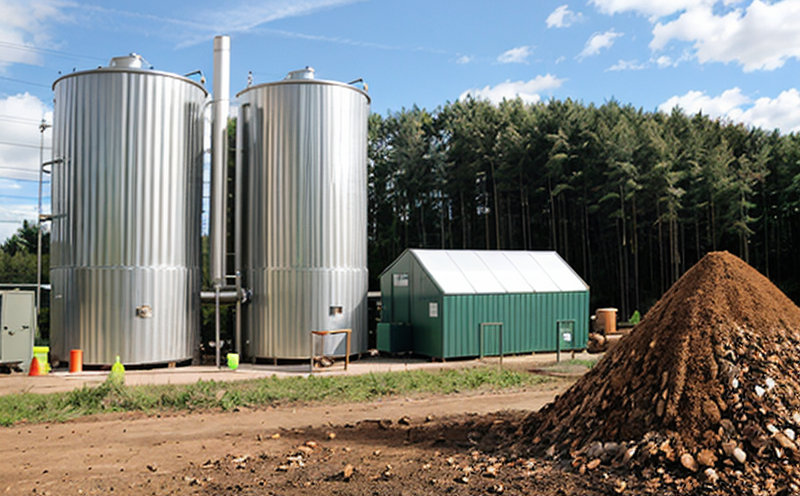EN 15359 Classification of Solid Recovered Fuels from Waste
The EN 15359 standard is a pivotal document in the waste management and recycling sector, providing a standardized approach to classifying solid recovered fuels (SRF) derived from waste materials. This classification system ensures that SRF can be accurately characterized and utilized effectively for energy recovery processes such as waste-to-energy conversion.
The importance of this classification cannot be overstated, particularly in the context of increasing global efforts towards sustainable waste management practices. By categorizing SRF according to specific quality parameters, EN 15359 ensures that only fuels meeting stringent criteria are used for energy recovery processes. This not only enhances operational efficiency but also reduces environmental impact.
The standard covers a range of physical and chemical properties including calorific value, ash content, moisture content, and particle size distribution among others. These parameters are critical in determining the suitability of SRF for various waste-to-energy applications. For instance, fuels with higher calorific values are more efficient when combusted, while lower ash contents can reduce wear and tear on combustion equipment.
Accurate classification also facilitates better supply chain management by providing clear communication between waste generators, recyclers, and energy producers about the quality of SRF. This transparency is essential for maintaining consistent fuel quality throughout the supply chain, which directly impacts the performance and reliability of waste-to-energy facilities.
In addition to its role in ensuring fuel quality, EN 15359 plays a crucial part in promoting recycling and sustainable resource management. By providing a standardized framework, it encourages the development of efficient recycling processes that can produce SRF suitable for energy recovery. This contributes to reducing landfill waste and minimizes greenhouse gas emissions associated with traditional waste disposal methods.
The standard is widely used across Europe and has been recognized internationally as a best practice in waste management. Its implementation helps align different stakeholders within the industry towards common goals, fostering innovation and collaboration.
Scope and Methodology
| Parameter | Description |
|---|---|
| Calorific Value (MJ/kg) | The heat energy produced when a fuel is combusted. High calorific value fuels are preferred for waste-to-energy conversion. |
| Ash Content (%) | The percentage of non-combustible materials in the fuel, which can cause wear and tear on combustion equipment. |
| Parameter | Description |
|---|---|
| Moisture Content (%) | The amount of water present in the fuel, which affects its calorific value. |
| Particle Size Distribution (mm) | The range of particle sizes within a given fuel sample, influencing combustion efficiency and equipment wear. |
The methodology for testing under EN 15359 involves rigorous sampling procedures to ensure that representative samples are tested. These tests include calorimetric analysis, ash determination using gravimetric methods, moisture content measurement via drying techniques, and particle size analysis through sieving or laser diffraction.
Calorific value is typically determined using bomb calorimeters, while ash content is measured by incinerating the sample at high temperatures and weighing the residue. Moisture content is found by drying the fuel in an oven until constant weight is achieved. Particle size distribution can be assessed using standard sieves or laser diffraction spectrometers.
Accurate reporting of these parameters forms the basis for classifying SRF into different categories, each suited for specific waste-to-energy applications. This ensures that only fuels meeting the specified criteria are used in energy recovery processes, thereby enhancing operational efficiency and environmental sustainability.
Why Choose This Test
The EN 15359 classification test is essential for quality managers, compliance officers, R&D engineers, and procurement professionals involved in waste-to-energy projects. Accurate classification ensures that only fuels meeting stringent criteria are used for energy recovery processes.
For quality managers, this test provides a reliable means to monitor fuel quality throughout the supply chain. It helps identify any variations or inconsistencies early on, allowing for corrective actions before they impact operations significantly.
Compliance officers benefit from EN 15359 as it offers a clear framework against which compliance can be assessed. This ensures that facilities are meeting regulatory requirements and industry best practices consistently.
R&D engineers can leverage the standardized data provided by this test to optimize fuel formulations and process parameters, leading to improved performance and efficiency in waste-to-energy systems.
For procurement professionals, EN 15359 simplifies the selection process by providing a consistent basis for comparing different suppliers. It ensures that all fuels are evaluated based on the same criteria, reducing subjectivity and enhancing decision-making accuracy.
In summary, choosing this test provides assurance of fuel quality, compliance with regulations, optimized operational performance, and streamlined procurement processes—all critical factors in the successful implementation of waste-to-energy projects.
International Acceptance and Recognition
The EN 15359 standard has gained significant recognition and acceptance both within Europe and internationally. Its widespread adoption underscores its value as a comprehensive tool for classifying solid recovered fuels from waste materials.
European countries have been early adopters of this standard, recognizing its role in promoting sustainable waste management practices and efficient resource recovery processes. Many countries across Asia, North America, and Africa are also integrating EN 15359 into their national standards and policies to ensure consistency and reliability in SRF classification.
International bodies such as the International Organization for Standardization (ISO) have acknowledged the importance of this standard, highlighting its role in harmonizing global practices. This recognition further enhances the credibility and applicability of EN 15359 on a worldwide scale.
The growing adoption of EN 15359 reflects a broader trend towards more sustainable approaches to waste management and resource utilization. As countries around the world seek to reduce their environmental footprint, standards like this play an increasingly crucial role in guiding best practices and innovations within the sector.





